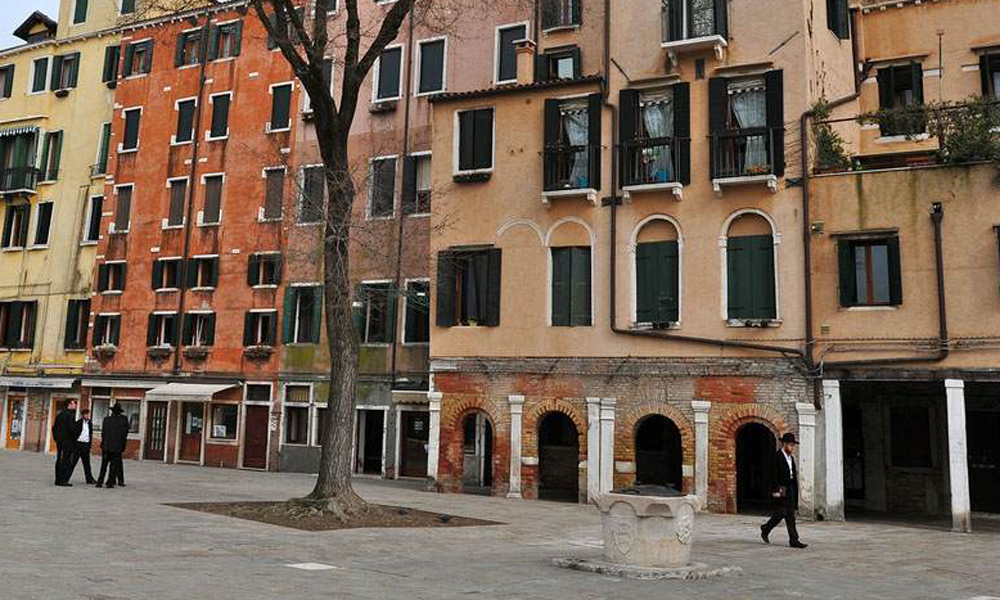It is Friday night in Venice’s Ghetto Nuovo. I am seated in the women’s section of the Scola Spagnola, one of the most beautiful synagogues of Europe. It is packed. The women, hair covered in everything from traditional head scarves to trendy turbans wound around their heads with breathtaking panache, hug and kiss each other, sure signs of a family simcha. Young boys climb to the area in front of the Ark, undertaking various ritual roles reserved for the cute and inexperienced. The women beam.
The next day, at the end of the service, the star of the show shyly mounts the platform before the Ark. To my surprise, it is a young girl, accompanied by her father and the rabbi. It is her bat mitzvah. The rabbi delivers an elaborate sermon in Italian and Hebrew explaining why, according to traditional sources, a bat mitzvah is halachically permissible, citing such modern luminaries as Rav Moshe Feinstein, who argued that the educational value of the bat mitzvah outweighs its Reform origins. There is a Kiddush afterwards in a spacious, art-filled community center nearby.
A mere week after terrorists rocked Europe by blowing up children at a concert in Manchester, the Jews of Venice—under the ever-watchful eye of a permanent army outpost set right inside the historic Ghetto—are relaxed and celebratory. “We are not worried at all,” a woman at the Kiddush says in answer to my question. “We don’t have these kinds of problems in Venice. Here we all get along.”
I see her point. The ghetto, once the involuntary bastion of a barely tolerated Jewish community in a hostile Catholic environment, is now the destination for a steady stream of European tourists who patiently wait on long lines to enter the Jewish Museum and to catch a glimpse inside several local synagogues. Guards, who carefully questioned us when we arrived for Sabbath services before allowing us inside, will allow them their glimpse after reading them the riot act about no picture-taking and respecting the sanctity of the place.
It would all be idyllic, except that there are barely 500 Jews left in Venice and far fewer in the vicinity of the Old Ghetto. Reminders of the 8,000 Italian Jews deported (most of them murdered), among them more than 250 from the Ghetto itself, are everywhere. In a house directly across from the Kiddush venue, bronze plaques set in the cobblestone street state, “Salomone Aboaf, arrested 17.8.1944. Deported to Auschwitz. Assassinated 7.9.1944.” There is an Aboaf who now resides in one of the apartments, and an Aboaf whose name marks a seat in the synagogue. One wall of the main square features an iron sculpture depicting a cattle car being emptied and its inmates machine-gunned.
It’s not all for show. The synagogue that bustles with visitors and guests on the weekend also has a regular minyan during the week. Chabad has set up shop in a storefront nearby, catering to tourists and the newly observant, as well as running the popular local kosher restaurant, Gam Gam—packed not only with Jews but also with adventurous tourists eager to sample Jewish Venetian cuisine. These visitors also flock to the Venice Jewish Museum, with its priceless treasure of 16th- and 17th-century Jewish ritual objects, hand-embroidered ark covers, megillot and haggadot carefully preserved behind glass. But except for the handful of Chabad children wearing kippot and earlocks playing in the square, there doesn’t seem to be much evidence of an actual Jewish presence. As the man who sells me my museum ticket says, “The ghetto was dissolved in 1797. Now everybody lives here, not specifically Jews.”
The effect intensified as we moved south on a cruise that touched several points along the Adriatic coast. In the ancient city of Dubrovnik, once called Ragusa, now part of Croatia—which served as a refuge to Jews fleeing the Inquisition—the synagogue no longer holds services, even on the Sabbath. The 50 remaining members of the Jewish community use the synagogue only for high holiday services, though a company called Milk and Honey offers a tour for $300 of where Jews once lived. (We passed.)
Yet further south, in Athens, the Jewish community of about 3,000 has nearly abandoned the inner-city synagogue, a beautiful modern building with stained glass windows, as they move to the northern suburbs of the city. Our guide, a Greek Jew who speaks impeccable Hebrew, mourns the assimilation of the Jews who drive in on the Sabbath for the occasional bar or bat mitzvah.
Rebbetzin Nechamah Hendel, the young wife of Athens’ Chabad rabbi Mendel Hendel, thinks there is not much economic future for the Jewish community in Greece and notes that a neo-Nazi party has won 7 percent of the seats in the Greek parliament. Hendel, an immigrant from Paris, thinks the Jews of both Greece and France would make aliyah if they could, but “it’s not so easy to move to Israel. It’s expensive to find housing.”
My daughter, who lives in Paris, the mother of six Parisians who speak Hebrew and wear kippot and go to Jewish schools, might agree. Her husband’s family business makes aliyah impossible at this time, but incidents like those in Manchester and almost daily confrontations with anti-Semitism make aliyah—or immigration to the United States or French-speaking Quebec—a frequent topic. The recent murder of a beloved Jewish doctor, allegedly by a Muslim neighbor who threw her out the window, has led French Jews to consider the difficult options for their future, questions shared with more or less urgency by all European Jews.
More and more, Jewish life in Europe seems to be lived behind protective barriers: soldiers, police and finally actual glass cases. Sadly, the tide of history seems to point to the inevitable transition of European Jewish communities toward the status of historical artifacts, drained of a living Jewish presence, footnotes in guidebooks for curious visitors.
Naomi Ragen is a novelist and playwright living in Jerusalem.

